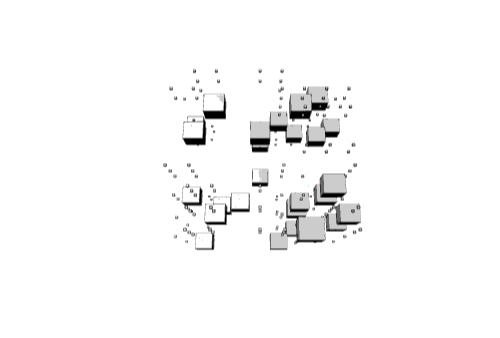Computer Generated Education
Everything is a Story** **
As humans, we are primed at the deepest levels to listen to and tell stories. We create movies, television shows, write novels, and sit around the dinner table telling each other stories about our day. It goes even deeper than that. It’s said that even startups rise or fall on the quality of the story behind the business venture. We even frame the whole way we deliver software products around user capabilities described in “User Stories”. So it should come with little surprise that all the major social media platforms have organized around the story format. Stories in the social media context are bite-sized multimedia experiences. Adopted by Snapchat, Instagram, TikTok, Facebook, YouTube, and WhatsApp. Even traditional media is trying to capitalize on this format with efforts like Quibi.
I was reading a dystopian article by Nicholas Carr called TikTok and the coming of infinite media around the same time of discovering my two niece’s obsession with Snapchat “streaks”. A streak is a kind of “don’t break the chain” gamification employed by Snapchat whereby users are called out with badges signifying their daily storytelling. My nieces were so attached to their streaks that the potential loss of their phone privileges and subsequent break of streaks filled them with horror. Between the Carr article and my first-hand observation of this obsession, I felt that surely all of western civilization was doomed and rapidly sliding into utter banality and destruction. The thought occurred to me that there had to be a way to leverage this mechanic and these flatforms in a more beneficial way.
This gave rise to the idea of using procedurally generated educational content combined with computer-driven evaluation methods to repurpose these social media distribution channels and game mechanics for good. Let’s look at both aspects individually.
Computer Generated Stories
Media, in the social media story format, can be created programmatically. I’ve done several experiments with Narakeet and can personally attest to how easy it is to dynamically create short videos purely from text, images, and some short pre-made video clips. Google is even currently experimenting with this by creating videos from websites. One could use thematically related content from sources like Wikipedia or open textbooks to create series of social media stories that are educational and conveniently consumable.
Computer Generated Tests
The second part of this is the evaluation side of things. It’s good and all to be consuming educational content as opposed to mediocre entertainment but we can take it further. Studies show that merely having the expectation of being evaluated or having to explain material improves one’s retention of material. Crazily enough, recent advances in computer science language models have made it possible to automatically generate true/false quizzes from a piece of textual content. So from the same body of text, you can create short instructional videos and short quizzes to evaluate the viewer’s retention of that information. Ramsri Goutham has made this an easily accessible reality in the form of an open-source tool called Questgen.
Conclusion
The same science that can create a bomb can create nearly limitless inexpensive energy. Rather than deriding how technology is being used, we need to evaluate how it can be repurposed and reconfigured for good. The above scheme has enormous potential and is probably only limited by our willingness to step out of our comfort zones and think outside the box. Consider the educational crisis of over-packed classrooms or empty classrooms in the case of the ongoing and evolving pandemic. This approach doesn’t even require the creation of a new network because it exists as just another channel on the existing social media networks. Or imagine trying to shift the culture in a large scale enterprise setting. Do you hire teams of trainers and coaches to make that change or introduce a large scale reeducation program that can be executed by a small set of technical experts?
Several years ago I wanted to test out of some college classes so instead of taking the classes that would have required me to drive and sit through, what I believed to be inefficient class activities, I just downloaded some flashcard apps designed for that material. Then every morning when I woke up, I spent about an hour cycling through the cards, studying the concepts, major figures, history, and principles of the topic. The flashcard app kept track of my growing accuracy and used spaced repetition to perfectly time when certain problem cards were repeated. It honestly didn’t even feel like work.
James Clear in his amazing book Atomic Habits talks about reducing the friction to do the things you want to be doing and I can’t think of a better friction reducer than to be strategically replacing people’s social media addition with the gamified education described above.
